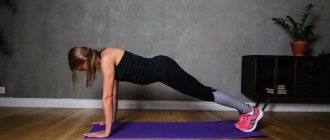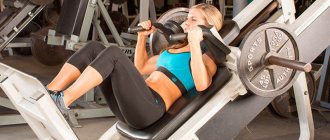Who is suitable for stair running?
This sport has a huge number of fans. Moreover, the range of target audiences is very different.
- Professional and amateur athletes use stair running as an effective way to prepare for a new load. Stair training helps train your body for trail running. This is running on natural terrain. Trail running requires climbing skills. To do this, you need to practice the correct positioning of your legs and pump up your muscles. The same goes for skyrunning and vertical runs. Running climbs are a completely different load on the body when compared to regular running.
- Road runners use stair running to develop muscle strength, endurance, and coordination. Below we will take a closer look at the effect of such a load.
- People who do not have alternative places to run choose stairs. For example, young mothers with a baby sleeping at home. Or residents of a village where there is no gym, running area, or convenient track.
- Running up stairs is often used for weight loss. However, given the high intensity of such training, there are some important features. Let's look at them separately below.
This activity is a useful type of sports activity. However, people with chronic diseases should consult their doctor first. Special attention is required: varicose veins, arthritis, previous injuries, strokes/heart attacks, arrhythmias.
Ascent and descent
The descent can provide a short break from the ascent and will also have a positive effect on your blood sugar levels. However, remember that along with a decrease in the load on the cardiovascular system, tension in the shins and knees increases significantly.
When descending, special care must also be taken because, as a result of the heavy load on the legs when ascending, on the way down, individual muscles may spasm and involuntarily contract, which means that the legs can literally give way and tuck in at the most unexpected moment.
If you have problems with your knees, we strongly recommend choosing a different type of workout so as not to harm your health!
Despite the many advantages, one cannot ignore the fact that running up stairs is a physically difficult and exhausting type of training that is not suitable for every athlete. Therefore, before you start training, we recommend that you consult with your doctor to make sure that your cardiovascular and musculoskeletal systems are ready for such stress. If everything goes well, you will be one of the lucky ones who can fully enjoy all the benefits of running on the stairs!
Features of training on stairs
How is running up stairs so different from other running workouts? Let's look at the pros/cons separately.
Advantages
Effect on the body
During such a run, the muscular-ligamentous system is loaded much more heavily. The quadriceps femoris, calf group, and foot stabilizer muscles are especially involved. On the stairs, a person can perform special plyometric exercises to maximize muscle load. For example, jumping with one leg; frog jumping.
The increased load allows for greater development of the respiratory and cardiovascular systems. Therefore, running up stairs increases the aerobic glucose breakdown threshold (AGT). This means that you will be able to run harder, longer, within the aerobic range.
According to the British journal Sport Medicine, short stair runs 5 times a week increase maximum oxygen consumption by 17% in just 2 months.
The pulse decreases - the heart works more economically. This training develops a network of collateral vessels and stimulates the acceleration of metabolic processes. Maximum benefit for the same jogging time!
Result
High-intensity running up the stairs will allow you to achieve results faster. Be it losing weight, strengthening muscles, increasing endurance or developing “breathing ability”.
Download training plans to prepare for the marathon and half marathon.
Start preparing right now!
However, this does not mean that you need to exhaust yourself. Below you will find a sample training plan that will allow you to achieve results without harm to your body.
Availability
As we already said, there are stairs everywhere! In any city park, entrance, near government institutions. There is no need to buy a subscription, travel far, or look for a route. The lesson will be held locally and very productive.
Flaws
Beginners
An intensive training program is not suitable for an unprepared body. Running up stairs is a high level of exercise. Beginners need to start with the minimum.
If you immediately start running, your breathing will become irregular, your pulse will rise above the permissible norm, and your muscles will immediately “clog.”
There is a way out - beginners are advised to walk at a calm pace. As soon as the body adapts, move on to the walking/running combination.
Contraindications
People with arthrosis, arthritis, and vasculitis should take into account the greater load on the joints. It is prohibited to engage in this type of sport during an exacerbation period.
In diabetes mellitus, hypoglycemia may occur. But slow walking is even beneficial.
Considering that overweight people are recommended to run up stairs to lose weight, it is important to remember the restrictions. With a BMI (body mass index) above 30, such exercise is prohibited. Otherwise, the joints will be injured.
Cardiovascular, endocrine diseases, vascular pathologies, and previous injuries require consultation with a doctor.
Traumaticity
It's not just improper technique that can cause injury. Before you start jogging, it is important to examine the integrity of the steps. The distance between them should be the same. Avoid pits, holes, cracks. The leg may slip, become twisted, or be injured during a fall. Safety first!
The benefits and harms of running in the entrance for weight loss
Stair running belongs to a high-intensity group of exercises that place a very high load on the body. Therefore, unfortunately, it is not shown to everyone. No matter how high the effectiveness in losing weight, you will have to refuse classes in the entrance if you have the following contraindications:
- For obesity (body mass index more than 30);
- With active varicose veins;
- For hypertension;
- After a heart attack and stroke;
- Diseases of the cardiovascular system;
- For scoliosis;
- During pregnancy;
- After operations;
- In the presence of any inflammatory processes (including fever);
- For diseases or injuries of the joints, especially the knee and ankle.
The benefits and harms of running up the stairs at the entrance are, of course, incomparable. There are many more positive aspects than negative ones. Later we will list the benefits of running up and down stairs, but first we will differentiate between these two types of load.
Running up stairs for weight loss
I want to get rid of excess weight as quickly as possible. Therefore, running up the stairs for weight loss is attractive due to its effectiveness.
If you are overweight, your joints will be subject to much more stress. After just a few workouts, pain and signs of inflammation may occur (swelling, redness, local increase in skin temperature).
A gradual increase in load will help to avoid such complications. Start by walking.
Even before walking, your joints must be prepared! A regular warm-up will help.
The main question is what effect to expect?
There are no universal numbers, because how many calories running up the stairs burns depends on your metabolic rate, duration and intensity of exercise. Fat begins to be burned faster than during jogging (after 20-30 minutes).
Approximately, when you have already moved from walking to running, after 20 minutes of exercise, 10-15 kcal/minute is burned.
Regular training will give excellent results!
Recommendations for training:
- Before running, be sure to warm up, focusing on your lower limbs.
- Exercise regularly - at least three times a week.
- For best results, alternate running with walking.
- Breathe correctly during exercise. Inhale through your nose and exhale through your mouth.
- Gradually increase the number of approaches.
Also, experienced athletes give beginners advice on the technique itself. It is best to choose a staircase that you can run continuously for at least fifteen seconds. When lifting up, lean forward a little and work more actively with your arms. If possible, take a wider step and push off the ground with the front of your feet. When going down the stairs, direct the load to the gluteal muscles, but to a lesser extent to the knees.
Walking up the stairs
It seems - what could be easier than walking up the steps? However, almost all of us do it wrong.
The walking technique is as follows: keep your body straight, bend your elbows slightly below your chest. No matter how much you want to look at your feet, keep your head straight! Place your foot halfway on the steps to relieve pressure on your heel.
Move at a pace that allows you to breathe evenly while speaking freely.
Which entrance is suitable?
So, we smoothly moved on to the next topic - is it possible to practice losing weight by running up the stairs in any accessible location?
First of all, the staircase must be level, with the same height of all steps, without holes, holes or other defects. Believe me, falling down the steps is very painful!
Secondly, it is advisable that the entrance is well ventilated so that you have a sufficient amount of air. As you know, during sports activities, a person’s oxygen consumption increases approximately 1.5 times. That is why it is recommended to exercise in green parks and in the fresh air.
Of course, a smoky entrance with fragrant fumes from the garbage disposal will not suit you. We recommend exploring neighboring houses, preferably new buildings, where the elevator and staircase have different entrances. People use elevators more often, so the stairs are empty, it’s clean, there’s a lot of air.
If there is no suitable entrance nearby, look for the nearest stadium with seats. This is an ideal springboard for losing weight - here you can run up and down the stairs, jog a couple of times, and shake your abs.
Training plan
How to properly increase the intensity of your training so that running up stairs is effective?
Our table will help you.
| A week | Frequency | Duration | Load |
| 1 | 1-2 times/week: | 10-15 minutes | General developmental exercise (the table below is a list) Walking up the stairs |
| 2 | 2-3 times/week: | 20-25 minutes | General developmental exercises Walking, turning into slow running |
| 3 | 3-4 times/week: | 30-35 minutes | General developmental exercises Running + strength exercises (squats, squat jumps) |
| 4 | 4-5 times/week | more than 40 minutes | General strengthening exercises Interval running (medium pace + high pace) |
General strengthening exercises are performed on one flight (+/- 10 steps)
- Running up the stairs, landing on each step;
- Landing through one step;
- Climbing (running or walking) through 2 steps with quadriceps tension and a relaxed foot;
- Running sideways (left, right) landing on each step;
- Jumping with two legs;
- Jumping with both legs (toad position);
- Running up the steps in a zigzag pattern;
- “Skater exercise” - jumping in different directions of steps;
- Lunges forward through 2 steps with fixation of body position.
Contraindications for running along the eyelash
First of all, you need to understand that running in the entrance and on the street is a big difference. Of course, it is more pleasant to exercise in the fresh air, watching the beautiful landscapes around, than to run up the stairs, smelling the aromas of tobacco smoke and garbage chutes.
The main diseases for which you should not run:
- Joint diseases;
- Injuries of the limbs, spine, severe scoliosis;
- Hypertension and heart disease.
Be that as it may, before starting any kind of sports, you need to consult a doctor.
Is the idea worth the candle?
Walking and running on steps is a folk sport brought about by civilization. This was led to by the development of transport, the equipping of buildings with elevators and the expansion of the share of mental professions.
Don't make a cult out of your activities. Previously they were not considered sports. This was the daily life of the townspeople:
- In large cities, people ran up the stairs of their multi-storey buildings every day when the relevant services could not ensure the serviceability of the elevators
- Numerous transfers when traveling to work forced residents to use courtyard paths, climbing flights of stairs that smooth out uneven terrain between houses.
- The office in which one had to work was often located in the common “anthill” of a rental building, which forced the employee to count with his feet the number of steps he managed to climb per day.
Now people are accustomed to comfort. Even food may be in short supply, but transport is more or less organized. After all, without it, no one will take your free work.
To avoid curling up next to your desk, you need to do physical exercise . And running up the stairs is most suitable. There is evidence:
- It's free.
- Everything is nearby. Every home, office, factory has steps. Their absence is rare. Then you will find them nearby.
- Training can be either a replacement for running or the gym, depending on the intensity.
If you decide that such activities make sense, then you can do them right today , because this does not require special equipment or physical training.
This is interesting
- [uaf_vkcount url='https://beginogi.ru/pomogayut-li-prisedaniya-dlya-bega-i-chto-luchshe/']
Do squats help for running and which is better?
- [uaf_vkcount url='https://beginogi.ru/aerobnaya-vyinoslivost-i-nagruzki-pri-takom-rezhime-trenirovok/']
Aerobic endurance and loads with this training regimen
- [uaf_vkcount url='https://beginogi.ru/pochemu-napravlenie-bega-na-stadione-protiv-chasovoy-strelki/']
Why is the direction of running in the stadium counterclockwise?











